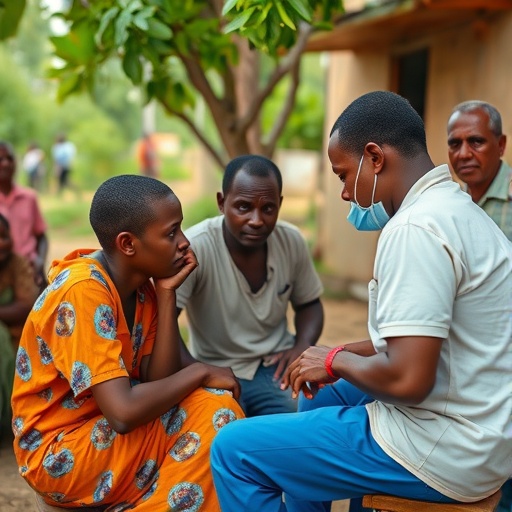Can Hawaiʻi get to 100% renewable energy? – University of Hawaii System

Report on Hawaiʻi’s Path to Sustainable Energy in Alignment with Global Goals
Introduction: Assessing Progress Towards SDG 7 and SDG 13
A collaborative report, titled Assessment of the Scope of Tasks to Completely Phase out Fossil Fuels in Hawaiʻi, has been co-authored by researchers at the University of Hawaiʻi at Mānoa and other institutions. This analysis evaluates the state’s progress toward its legal mandate of achieving 100% renewable electricity by 2045. The report’s findings are critical for understanding the necessary steps to meet the objectives of Sustainable Development Goal 7 (Affordable and Clean Energy) and SDG 13 (Climate Action) by transitioning the state’s entire economy away from fossil fuels.
Current Energy Landscape and Key Challenges
Hawaiʻi’s current energy profile presents significant challenges to achieving its sustainability targets. The state’s progress and dependencies are outlined below:
- 2045 Mandate: 100% of electricity to be generated from renewable sources.
- 2023 Status: 31% of the renewable energy goal has been met.
- Energy Deficit: The state consumes nearly nine times more energy than it produces.
- Fossil Fuel Reliance: Petroleum constitutes 80% of total energy consumption, a major impediment to fulfilling commitments under SDG 7 and SDG 13.
Economic Vulnerability and the Imperative for a Sustainable Economy
The report highlights Hawaiʻi’s economic vulnerability stemming from its dependence on the global oil market. This reliance undermines the principles of SDG 8 (Decent Work and Economic Growth) and SDG 11 (Sustainable Cities and Communities). Key vulnerabilities include:
- Unaffordable Energy: Electricity prices in Hawaiʻi are more than double the U.S. national average, directly conflicting with the “affordable” energy target of SDG 7.
- Supply Chain Instability: The state’s oil supply is subject to unreliability in both source and price due to global market volatility.
- Recommendation for Transition: The report suggests that reliance on oil should be phased out within 10–20 years to foster a stable and sustainable economic future.
Analysis of Renewable Energy Solutions and Infrastructure Needs
To facilitate a transition that supports SDG 9 (Industry, Innovation, and Infrastructure), the report evaluated a portfolio of non-fossil fuel solutions. The analysis underscores that a diversified energy strategy is essential.
Key Findings on Energy Solutions
According to Nicole Lautze, a report co-author and director at the UH Mānoa School of Ocean and Earth Science and Technology, a combination of intermittent and firm power sources is required.
- Insufficiency of Intermittent Renewables: Solar and wind power, even when paired with battery storage, will not be sufficient to meet the state’s total energy demand on their own.
- Requirement for Firm Power: To ensure grid stability and achieve a 100% renewable system, firm (24/7) power generation is a mandatory component.
- Viability of Geothermal: The report identifies geothermal energy as a critical source of firm power that can enable the state to reach its renewable energy targets.
Evaluated Non-Fossil Fuel Solutions
The report considered a comprehensive range of technologies to build a resilient and sustainable energy infrastructure:
- Solar
- Wind
- Hydro
- Biomass
- Nuclear
- Geothermal
- Ocean Energy
Conclusion: A Path Forward for a Sustainable Hawaiʻi
The comprehensive report provides state decision-makers with actionable information to develop an effective and efficient transition plan. Moving away from fossil fuels is presented not only as a means to comply with state law but as a fundamental necessity for creating a more sustainable, stable, and resilient energy future. This transition is crucial for Hawaiʻi’s contribution to global efforts in achieving the Sustainable Development Goals, particularly SDG 7, SDG 11, and SDG 13.
Analysis of Sustainable Development Goals in the Article
1. Which SDGs are addressed or connected to the issues highlighted in the article?
- SDG 7: Affordable and Clean Energy: The article’s central theme is Hawaiʻi’s transition to 100% renewable energy, directly addressing the goal of ensuring access to affordable, reliable, sustainable, and modern energy for all.
- SDG 8: Decent Work and Economic Growth: The article discusses Hawaiʻi’s economic vulnerability due to its reliance on the global oil market and aims for a “more sustainable and stable energy future,” which connects to promoting sustained and inclusive economic growth.
- SDG 13: Climate Action: The state’s legal mandate to “completely phase out fossil fuels” is a direct measure to combat climate change and its impacts, aligning with the core objective of this goal.
- SDG 17: Partnerships for the Goals: The article highlights the collaboration between the University of Hawaiʻi, other institutions, and the organization Sustainable Energy Hawaiʻi to produce the report, exemplifying the partnerships needed to achieve the SDGs.
2. What specific targets under those SDGs can be identified based on the article’s content?
- Target 7.2: “By 2030, increase substantially the share of renewable energy in the global energy mix.” The article directly addresses this target by discussing Hawaiʻi’s legal mandate to achieve “100% renewable energy by 2045” and its progress so far.
- Target 7.1: “By 2030, ensure universal access to affordable, reliable and modern energy services.” The article touches upon the “affordable” aspect by noting that “Hawaiʻi’s electricity prices are more than double the U.S. average,” indicating a challenge in meeting this target. It also mentions the unreliability of oil supplies, which the transition to renewables aims to solve.
- Target 8.4: “Improve progressively, through 2030, global resource efficiency in consumption and production and endeavour to decouple economic growth from environmental degradation…” The article supports this by detailing the plan to phase out reliance on oil, which currently accounts for 80% of energy consumption. This transition decouples Hawaiʻi’s economy from fossil fuel consumption.
- Target 13.2: “Integrate climate change measures into national policies, strategies and planning.” Hawaiʻi’s “legal mandate to generate all its electricity from renewable sources” and the creation of the report “Assessment of the Scope of Tasks to Completely Phase out Fossil Fuels in Hawaiʻi” are clear examples of integrating climate action into state-level policy and strategic planning.
- Target 17.17: “Encourage and promote effective public, public-private and civil society partnerships…” The article showcases this target through the collaborative effort of “researchers at the University of Hawaiʻi at Mānoa and other institutions” who co-authored the report with organizations like “Sustainable Energy Hawaiʻi.”
3. Are there any indicators mentioned or implied in the article that can be used to measure progress towards the identified targets?
- Indicator for Target 7.2: The article provides a direct indicator: the share of renewable energy. It states that Hawaiʻi “achieved 31% in 2023” against its goal of 100% by 2045.
- Indicator for Target 7.1: An implied indicator for affordability is the price of electricity. The article mentions that “Hawaiʻi’s electricity prices are more than double the U.S. average,” which serves as a baseline metric to track progress on making energy more affordable.
- Indicator for Target 8.4: The reliance on fossil fuels is a key metric. The article states that petroleum “accounts for 80% of total energy consumption.” Reducing this percentage is a direct indicator of progress in decoupling the economy from fossil fuels.
- Indicator for Target 13.2: The existence of a formal policy is an indicator. The article points to the “state’s legal mandate” for 100% renewable energy as evidence of an integrated climate policy. The report itself is an indicator of strategic planning.
- Indicator for Target 17.17: The existence of the partnership itself is an indicator. The collaboration between the University of Hawaiʻi and Sustainable Energy Hawaiʻi to produce a public report is a measurable outcome of a multi-stakeholder partnership.
SDGs, Targets, and Indicators Summary
| SDGs | Targets | Indicators |
|---|---|---|
| SDG 7: Affordable and Clean Energy | 7.2: Increase substantially the share of renewable energy in the global energy mix. | The share of renewable energy in total energy consumption, which was 31% in 2023. |
| SDG 8: Decent Work and Economic Growth | 8.4: Improve global resource efficiency and decouple economic growth from environmental degradation. | The share of fossil fuels (petroleum) in total energy consumption, which is currently 80%. |
| SDG 13: Climate Action | 13.2: Integrate climate change measures into national policies, strategies and planning. | Existence of a “state’s legal mandate to generate all its electricity from renewable sources.” |
| SDG 17: Partnerships for the Goals | 17.17: Encourage and promote effective public, public-private and civil society partnerships. | The co-authored report by the University of Hawaiʻi and Sustainable Energy Hawaiʻi. |
Source: hawaii.edu

What is Your Reaction?
 Like
0
Like
0
 Dislike
0
Dislike
0
 Love
0
Love
0
 Funny
0
Funny
0
 Angry
0
Angry
0
 Sad
0
Sad
0
 Wow
0
Wow
0



























;Resize=805#)








































![China’s photovoltaic cell exports reached 10.38GW in September as third-quarter surge subsided [ SMM Analysis] – Shanghai Metals Market](https://imgqn.smm.cn/production/admin/news/en/pic/XTwWi20251028115805.png?#)







